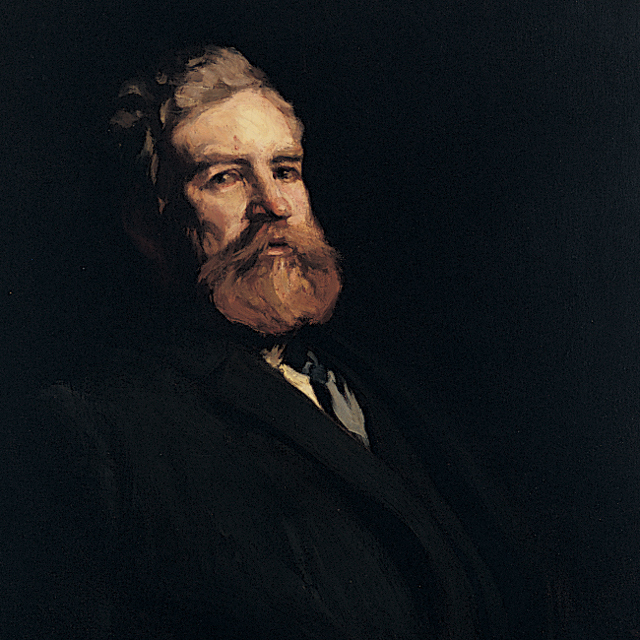Winfield Scott Chaplin succeeded William Greenleaf Eliot as the fourth chancellor of Washington University, serving from 1891 until 1907.
He was born in Maine in 1847 and graduated from West Point in 1870 as a second lieutenant in the Army.
After his military service he began a career as a civil engineer and served for four years as professor of mechanical engineering at Maine State College. He also held faculty positions at Imperial University in Tokyo and Union College before being appointed professor of mechanics at Harvard, where he later served as dean of the Lawrence Scientific School. He held that position for six years, when he resigned to become chancellor at Washington University.
I have a vision of a great university. Its structures are grand and its surroundings are beautiful. The public esteem it, because its high aims, its great utility, its magnificent results are known. To support it is considered a duty, to aid in its development a pleasure, and to have one’s name connected with it an honor.
Winfield Scott Chaplin, Inaugural address, January 11, 1892
During his administration, one biographer noted that “every department of the institution moved from inadequate quarters to new and desirable sites,” and a new medical department, the St. Louis Medical College, joined the university, as did the Missouri Dental College. The university awarded its first PhD during his tenure — to a woman — and Chaplin brought to the board some members who would have long-lasting effects on the university, most notably Samuel Cupples, Adolphus Busch, and a 41-year-old businessman named Robert S. Brookings.
But the most important thing that happened during Chaplin’s time as chancellor was the move from downtown St. Louis to the 103-acre Hilltop Campus on the western edge of Forest Park, a necessary next step for the university to relieve its students from the smoky, dirty confines of the commercial district. He led the university for 16 years before going on to lead the American Rio Grande Land and Irrigation Company, the largest enterprise of its kind in the American Southwest. He later lived in San Antonio, Texas, where he devoted himself to independent study and served as president of the Academy of Science. When his health began to fail in 1917 he returned to St. Louis, where he died a year later.
A West Point classmate said Chaplin had four educational dogmas: a certain amount of knowledge, a certain mental training, fixed moral standards, and a set purpose.
Notable dates
1891: In October, the directors named Winfield S. Chaplin chancellor, and he replaced Marshall Snow, who had served as acting chancellor since the death of William Greenleaf Eliot.
1894: A real estate subcommittee of the board selected a hilly site west of Skinker Road for the university’s new campus — which became to be known as the Hilltop Campus.
1895: On April 14, Robert S. Brookings was named president of the Board of Directors.
1895: The university awarded its first student PhD to Anna Isabel Mulford, a graduate student in botany.
1899: Through a competition, Cope and Stewardson were selected as architects for the new campus.
1900: The cornerstone was laid for Busch Hall, the first building on the new Hilltop Campus, on October 20.
1901: Board President Robert Brookings leased the new buildings on the Hilltop Campus to the Louisiana Purchase Exposition Company to serve as headquarters for the World’s Fair.
1904: The World’s Fair took place from April 30 to December 1.
1905: A chapel service on January 30 marked the start of classes on the new campus.
